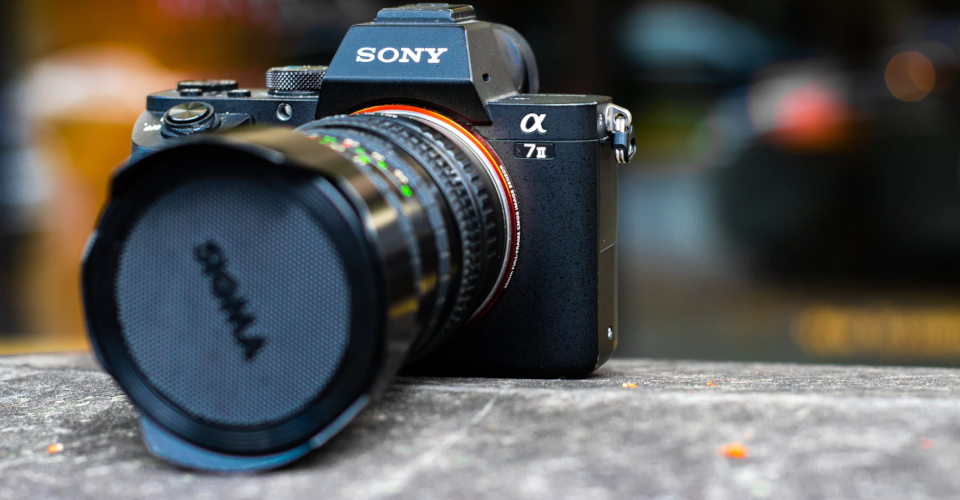6 Best Lenses for Sony a7 Cameras in 2020
Sony’s a7 family of full-frame mirrorless cameras has something for every type of artist. The upcoming a7s III and a7c offer unprecedented quality for filmmakers, while the a7 III and a7R IV boast world-class specs for photographers. Each of them is only as good as the lens you pair them with, though, and this guide is here to give you all the guidance you need in choosing the right ones.
Here you’ll find comprehensive reviews for the six best Lenses for Sony a7 cameras. We’ve selected top-performing models for a wide range of applications suitable for shooting videos or snapping award-winning stills. Find out what each has to offer and pair your class-leading camera with an equally worthy lens.
| Budget |
|---|
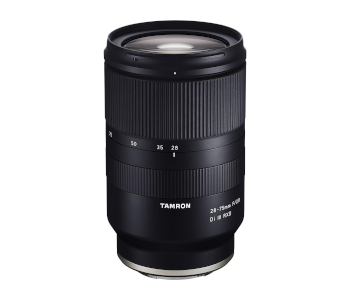 |
| Tamron 28-75mm f/2.8 Di III RXD |
| 4.3/5.0 |
| Type: Standard zoom |
| Image stabilization: No |
| This has a reliable autofocus. |
| Check Amazon |
| Best Value |
|---|
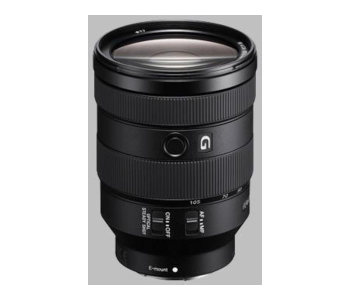 |
| Sony FE 24-105mm f/4 G OSS |
| 4.5/5.0 |
| Type: all-in-one zoom |
| Image stabilization: Yes |
| Great build quality and handling. |
| Check Amazon |
| Top Pick |
|---|
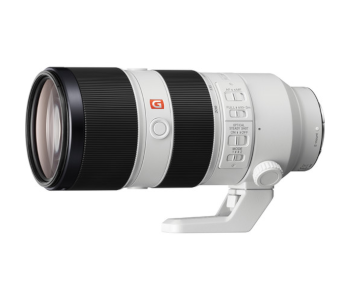 |
| Sony FE 70-200mm f/2.8 GM OSS |
| 4.8/5.0 |
| Type: Telephoto zoom |
| Image stabilization: Yes |
| Creates quality bokeh even at low apertures. |
| Check B&H |
Lenses for Sony a7 Cameras Comparison Table
| Image | Product | Overall Rating | Image quality | Versatility | Features | Price |
|---|---|---|---|---|---|---|
 | Sony FE 70-200mm f/2.8 GM OSS | 4.8 | 4.9 | 4.6 | 4.8 | Check Price |
 | Sony FE 24-105mm f/4 G OSS | 4.5 | 4.4 | 4.7 | 4.5 | Check Price |
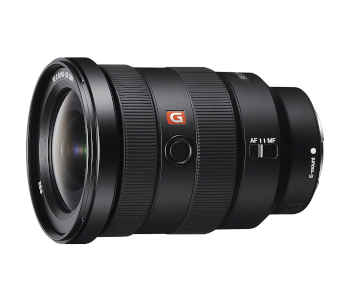 | Sony FE 16-35mm f/2.8 GM | 4.6 | 4.8 | 4.4 | 4.6 | Check Price |
 | Sony FE 85mm f/1.4 GM | 4.5 | 4.7 | 4.3 | 4.5 | Check Price |
 | Sony FE 90mm f/2.8 Macro G OSS | 4.4 | 4.6 | 4.3 | 4.4 | Check Price |
 | Tamron 28-75mm f/2.8 Di III RXD | 4.3 | 4.1 | 4.6 | 4.3 | Check Price |
1. Best Overall – Sony FE 70-200mm f/2.8 GM OSS
Editor’s Rating: 4.8/5
The 70-200mm f/2.8 GM OSS is a heavy-duty lens for professional photographers looking to get the most out of their a7 camera. Whether it’s for portraits, sports, or wildlife, the lens delivers razor-sharp results with split-second reaction times. Its build quality and general optics are equally impressive, and the price reflects this.
Overview of Features
The first thing you’ll notice about the 70-200mm f/2.8 GM OSS is its size. It wouldn’t be unusual for a DSLR telephoto, but it towers over a7 cameras. Build quality is superb as the lens is made from an aluminum alloy colored white in strategic areas so that exposure to sunlight doesn’t warp the barrel. It has a complex array of 18 groups consisting of 23 elements, one of which is extra-aspherical for minimizing the impact of chromatic aberration.
Autofocus duty is split between two motors. A Super Sonic Wave Motor handles the front part while a Dual Linear Motor takes care of the rear. This setup ensures blazing fast focus acquisition and quiet operation videographers will love. Three focus hold buttons let you pick separate focus positions to shift to, and a focus limiter enables you to achieve even more impressive response times.
The 70-200mm f/2.8 GM OSS has Optical SteadyShot. It combines with your camera’s internal image stabilization to offer five stops of correction. This increases the exposure time you can set the lens to and still get usable photos in perfect focus.
Central sharpness is outstanding, whichever setting you use. More importantly, the middle portion of the frame doesn’t degrade as you zoom in. It’s even sharper at 200mm than it is at 135mm, a rarity for even the world’s best telephoto zooms. Edges and corners are noticeably weaker at f/2.8 but start falling in line at f/4 and maintain their excellence until f/11.
The 70-200mm f/2.8 GM OSS is optically sound. Wonderful bokeh is its best feature here as highlights show no strong fringing and are round even at f/5.6. Moderate amounts of barrel distortion at 70mm give way to some pincushion distortion at 200mm. You can take care of that and the two stops of vignetting at 200mm during post for RAW or in the camera for JPEG images. Chromatic aberration stays within one pixel, and flaring is handled well.
What We Didn’t like
The 70-200mm f/2.8 GM OSS is the most expensive lens on review. You could also go for the Sony FE 70-200mm f/4 G OSS if you don’t mind one stop less and slightly less sharp images at a better price. This is a bulky and heavy lens that balances poorly without a tripod. You can still use it effectively without one thanks to excellent image stabilization, but you’ll be sore after intense use.
| Tech Specs |
|---|
| Dimensions: 3.5 x 3.5 x 7.8” |
| Weight: 3.2 lbs |
| Type: Telephoto zoom |
| Minimum focal length: 70mm |
| Maximum focal length: 200mm |
| Maximum aperture: f/2.8 |
| Minimum aperture: f/22 |
| Minimum focus distance: 3.2’ |
| Angle of view: 34° to 12° 30′ |
| Image stabilization: Yes |
| Pros |
|---|
| Exceptional sharpness that does not decrease at 200mm |
| Superb build quality |
| Creates quality bokeh even at low apertures |
| Well-rounded optics |
| Cons |
|---|
| Expensive |
| Large and heavy for a mirrorless lens |
2. Best Value – Sony FE 24-105mm f/4 G OSS
Editor’s Rating: 4.5/5
Are you a generalist looking for a single lens that handles most situations well? In that case, the 24-105mm f/4 G OSS will satisfy your needs and won’t cost you an arm and a leg. It’s suitable for all manner of photography, from landscapes through photojournalism to architecture and wildlife. You’ll have to work around a large vignette when shooting wide-open, but there are no other significant flaws to impede your creativity.
Overview of Features
The 24-105mm f/4 G OSS is part of Sony’s G lineup and is a tier below their premium lenses. However, it’s built from quality materials and can withstand unforgiving weather. A fluorine coating protects its outer glass from fingerprints and dirt, while a stationary 77mm filter thread accepts polarizers. The lens balances well on a7 full-frame cameras and isn’t too cumbersome. Its barrel extends considerably as you zoom towards 105mm but doesn’t lock since zoom creep isn’t an issue.
A Super Sonic Motor makes the 24-105mm f/4 G OSS a reasonably quick performer when acquiring targets. It hunts in low light occasionally, which isn’t news considering the low max aperture. Nevertheless, the lens sticks to targets reliably when they’re moving or in dim conditions. You’ll find a focus lock button on its barrel useful for pulling off focus and recompose. You may also use it as a custom function button.
Sony equipped this lens with OpticalSteadyShot. Combined with a7 cameras’ internal image stabilization, this gives you proper 5-axis stabilization that can compensate for as many stops.
The 24-105mm f/4 G OSS’s sharpness follows a linear progression, whichever focal length you use. It’s an outstanding performer at 24mm, where the center is sharp from the start. The corners trail behind but catch up nicely once you step down and continue improving until you hit f/11. The same scenario repeats itself with changing focal lengths, except that the overall image quality becomes slightly weaker the more you zoom in.
The 24-105mm f/4 G OSS isn’t a portrait lens but can pull off fine-looking bokeh under the right circumstances. It shows manageable levels of barrel and pincushion distortion. Lateral chromatic aberration is well within a pixel’s width, but you might notice some color fringing in the corners at f/4.
What’s Bad About It?
The 24-105mm f/4 G OSS exhibits severe vignetting at 24mm f/4. It exceeds five stops, which is unprecedented for an otherwise high-quality lens. You also won’t be able to correct for it entirely in post, so step down to f/5.6 or f/8 if the lighting permits it. Shooting into the light introduces a significant number of artifacts. They’re easy to predict, though, so you can frame your shots in a way that avoids them.
| Tech Specs |
|---|
| Dimensions: 3.3 x 3.3 x 4.5” |
| Weight: 3.2 lbs |
| Type: all-in-one zoom |
| Minimum focal length: 24mm |
| Maximum focal length: 105mm |
| Maximum aperture: f/4 |
| Minimum aperture: f/22 |
| Minimum focus distance: 1.3’ |
| Angle of view: 84° to 23° |
| Image stabilization: Yes |
| Pros |
|---|
| Excellent value for the money |
| Great build quality and handling |
| Above-average image quality |
| No major distortion issues |
| Cons |
|---|
| Terrible vignetting at 24mm f/4 |
| Issues with flare and artifacts |
3. Sony FE 16-35mm f/2.8 GM
Editor’s Rating: 4.6/5
Urban explorers and landscape photographers need a lens that captures vast spaces and fine details equally clearly, and the 16-35mm f/2.8 GM is Sony’s finest. It’s a well-rounded, exceptionally sharp performer that consistently produces keepers whether you’re shooting in the glaring sun or during twilight. It’s among Sony’s more expensive offerings, but its reliable performance makes the investment worth it.
Overview of Features
The 16-35mm f/2.8 GM is a compact and reasonably lightweight wide-angle zoom that balances well on Sony’s full-frame mirrorless cameras. Its barrel is made from polycarbonate, and the sixteen elements arranged within are sealed off from the elements. There’s a focus hold button between the knurled focus & zoom rings you can repurpose to a different custom setting. A reversible lens hood is included, as well.
Sony implemented a dual-motor system to drive the autofocus. Each motor takes care of one set of glass elements, which increases focus acquisition speed and leads to quieter operation. The lens is consistently accurate yet easy to adjust manually if the need arises. Its focus ring responds to small changes or quick throws with equal efficiency.
We were impressed with the 16-35mm f/2.8 GM’s sharpness. It comes bursting out of the gate with an excellent center and strong edges at 16mm f/2.8. Both values soar as you step down and hold steady until diffraction starts to decrease image quality at f/11. The pattern repeats itself throughout the focal range, except for 35mm f/2.8, where the corners are noticeably softer than the rest of the image.
Superb flare resistance is the 16-35mm f/2.8 GM’s best optical feature. The sun can take center stage in your photos without introducing any artifacts or a hint of flaring! Chromatic aberration is either absent or subdued, and the high max aperture lets you pull off impressively smooth background blur and bokeh for a wide-angle lens.
Are There Drawbacks?
The 16-35mm f/2.8 GM shows moderate distortion at both ends of its zoom range. Barrel distortion is expected, but two percent pincushion distortion at 35mm is excessive. There’s also 3.5 stops of vignetting at 16mm f/2.8 that gets better but doesn’t go away until you zoom in and narrow the aperture to f/8. Both problems can also be addressed in post or by your camera if you’re shooting JPEGs.
| Tech Specs |
|---|
| Dimensions: 3.5 x 3.5 x 4.8” |
| Weight: 1.5 lbs |
| Type: Wide-angle zoom |
| Minimum focal length: 16mm |
| Maximum focal length: 35mm |
| Maximum aperture: f/2.8 |
| Minimum aperture: f/22 |
| Minimum focus distance: 11” |
| Angle of view: 107° to 63° |
| Image stabilization: No |
| Pros |
|---|
| Excellent, uniform sharpness |
| Top-tier build quality |
| Handles chromatic aberration and flare impressing well |
| Beautiful bokeh for a wide-angle lens |
| Cons |
|---|
| Moderate distortion at focal length extremes |
| Strong vignetting when wide open |
4. Sony FE 85mm f/1.4 GM
Editor’s Rating: 4.5/5
The 85mm f/1.4 GM is ideal for portrait photographers looking for the silkiest backgrounds and perfect blurry highlights. Its wide max aperture allows for wonderfully shallow depth of field that centers perfectly on subjects, separating them from their surroundings. It’s wickedly sharp, built to Sony’s highest standards, and optically sound to boot.
Overview of Features
We’ve come to expect excellent build quality from the G master series, and the 85mm f/1.4 GM is no different. It’s sizeable for a prime lens, weather-sealed, and has manual aperture control if you prefer it. Eight groups hold eleven glass elements, one of which is aspherical and exceptionally thin to not harm background blur.
The motor that drives the 85mm f/1.4 GM’s autofocus is a ring-type model. It does the job silently and about as quickly as those on f/1.4 primes from other manufacturers. The focus ring is set towards the front and ribbed for optimum grip. It turns smoothly and offers an adequate amount of resistance for fine control.
The 85mm f/1.4 GM offers excellent sharpness, no matter the aperture. It’s already razor-sharp at f/1.4, especially in the central third portion of the frame. Its resolution sees a significant uptick at f/1.8 and continues to climb until f/4, where both the center and edges are exceptional. Diffraction becomes visible at f/8 but doesn’t affect the resolution so much that you couldn’t get usable images at f/16.
You buy portrait primes for their bokeh, and this one delivers world-class results. Background and foreground blur are creamy, while circular highlights are perfectly spherical and without harsh borders. The aperture has eleven rounded blades, meaning you can get great-looking bokeh even at lower apertures without visible edges on the highlights. Chromatic aberration is a non-issue, as is flare, thanks to Nano AR coating.
What We Didn’t Like
The 85mm f/1.4 GM has minor issues with vignetting and more serious ones with pincushion distortion. Light falloff at f/1.4 is more than 2.5 stops, which you may leave as is if you want a more pronounced darkening effect on RAW images. There’s 1.5 percent of pincushion distortion – high for an 85mm prime. Either issue can be corrected easily in-camera.
| Tech Specs |
|---|
| Dimensions: 3.5 x 3.5 x 4.2” |
| Weight: 1.8 lbs |
| Type: Portrait prime |
| Focal length: 85mm |
| Maximum aperture: f/1.4 |
| Minimum aperture: f/16 |
| Minimum focus distance: 2.6’ |
| Angle of view: 29° |
| Image stabilization: No |
| Pros |
|---|
| World-class bokeh |
| Exceptional sharpness that persists throughout the aperture range |
| Excellent build quality |
| No problems with flare or chromatic aberration |
| Cons |
|---|
| Some vignetting at f/1.4 |
| Moderate amount of pincushion distortion |
5. Sony FE 90mm f/2.8 Macro G OSS
Editor’s Rating: 4.4/5
Close-ups of insects, intricate electronics, or minerals are some of the most breathtaking in all of photography, and the 90mm f/2.8 Macro G OSS will help you land keeper after keeper. Superbly sharp and distortion-free, it’s a lens you’ll also love to use for portraits or architectural photos. It’s built to last, has an innovative focusing mechanism, and offers 1:1 magnification at 11 inches.
Overview of Features
The 90mm f/2.8 Macro G OSS sports a matte black barrel that holds 15 elements in 11 groups, including specialty glass designed to minimize chromatic aberration and flare. It has a metal mount with a rubber gasket that keeps dust particles from entering the lens and your camera. It’s among the lighter lenses on review and comes with a deep, barrel-shaped hood.
Focusing automatically is accurate but can be slow; using the focus limiter helps. The 90mm f/2.8 Macro G OSS is a silent performer and suitable for filming. Using manual focus involves pushing the ring backward. The distance scale rotates as you focus, and shifting from automatic to manual will position the focus point to match the scale. This is useful for when you have a preferred working distance and want to switch to it quickly.
The 90mm f/2.8 Macro G OSS excels at delivering tack-sharp images whichever aperture you use. Central sharpness is consistently outstanding, while the corners and edges match it at every setting except f/2.8. You can pull off photos ranging from portraits to narrow landscapes as the resolution doesn’t take a serious hit until you reach f/22.
The 90mm f/2.8 Macro G OSS is one of the most balanced lenses we’ve tested when it comes to optics. Its barrel distortion is academic, and you won’t notice color fringing or general CA unless you’re shooting highly contrasting scenes. Its performance in direct sunlight is almost as good as that of Sony’s wide-angle zoom. Bokeh doesn’t suffer from nervousness, while circular highlights have soft edges and even illumination.
What’s Bad About It?
Sony says that the 90mm f/2.8 Macro G OSS is weather-resistant, but it lacks proper sealing. It will withstand a drizzle but shouldn’t be exposed to harsh weather. Build quality isn’t up there with Sony’s top models. The barrel scratches easily, and you’ll want to handle the lens carefully since it might not survive a fall.
| Tech Specs |
|---|
| Dimensions: 3.1 x 3.1 x 5.1” |
| Weight: 1.3 lbs |
| Type: Macro lens |
| Focal length: 90mm |
| Maximum aperture: f/2.8 |
| Minimum aperture: f/22 |
| Minimum focus distance: 11” |
| Angle of view: 27° |
| Image stabilization: Yes |
| Pros |
|---|
| Excellent, uniform sharpness |
| Unique and useful approach to focusing manually |
| No significant distortion |
| Creates creamy bokeh |
| Cons |
|---|
| Lacks weather sealing |
| Mediocre build quality |
6. Best Budget Option – Tamron 28-75mm f/2.8 Di III RXD
Editor’s Rating: 4.3/5
Our budget pick is a lens Sony’s mirrorless system sorely needed – an affordable but capable standard zoom. Before Tamron’s 28-75mm f/2.8 Di III RXD came along, you could either go for the lackluster kit lens, a similarly-priced model with an f/4 aperture, or the top-tier solution that’s almost three times as expensive. Tamron’s lens levels the playing field, offering superb central image sharpness, close focusing distances, and portability as its main draws.
Overview of Features
A compact build is the 28-75mm f/2.8 Di III RXD’s first major asset. It’s much smaller and lighter than the competition while not compromising on the quality of its polycarbonate barrel or rubberized rings. The lens has a metal mount and a degree of moisture & dust protection, but Tamron doesn’t claim it is weather-sealed. It extends when you zoom in, accepts 67mm filters, and comes with a petal-shaped hood.
A Rapid eXtra-silent stepping Drive is responsible for the lens’s autofocus and its RXD designation. The name isn’t a marketing gimmick either as the 28-75mm f/2.8 Di III RXD focuses with precision no matter what mode you’re in, including Eye AF. You can step in at any time and adjust the focus manually. While it’s not a macro lens, you can shoot subjects as close as 7.5 inches from the sensor and achieve a magnification that goes from 1:2.9 to 1:4 as you increase the focal length.
The 28-75mm f/2.8 Di III RXD excels at central image sharpness. The frame’s middle third is already excellent at 28mm f/2.8 and continues to get better until f/8 and the appearance of diffraction. You’ll want to stick to 50mm if good sharpness across the frame is important, as that’s where the edges and corners are at their sharpest.
Other optics are generally positive. Bokeh behaves strangely at f/2.8 as highlights have bright outer rings that make them look like soap bubbles. Switching to f/4 improves their evenness considerably. There’s some barrel and pincushion distortion, nothing loading the lens’s profile or changing to JPEG couldn’t fix.
Are There Drawbacks?
The 28-75mm f/2.8 Di III RXD’s edge and corner performance is lackluster. They’re much softer than the center, especially when shooting wide open. This makes it a poor choice for landscape and architecture photos. There are close to three stops of vignetting at 28mm f/2.8 you can get rid of with the usual means.
| Tech Specs |
|---|
| Dimensions: 2.9 x 2.9 x 4.6” |
| Weight: 1.2 lbs |
| Type: Standard zoom |
| Minimum focal length: 28mm |
| Maximum focal length: 75mm |
| Maximum aperture: f/2.8 |
| Minimum aperture: f/22 |
| Minimum focus distance: 7.5” |
| Angle of view: 75° 23′ to 32° 11′ |
| Image stabilization: No |
| Pros |
|---|
| Punches above its weight class and fills a popular niche |
| Lightweight and portable |
| Reliable autofocus |
| Excellent central sharpness |
| Cons |
|---|
| Soft periphery |
| Pronounced vignetting when wide open |
Contents
- Lenses for Sony a7 Cameras Comparison Table
- 1. Best Overall – Sony FE 70-200mm f/2.8 GM OSS
- Overview of Features
- What We Didn’t like
- 2. Best Value – Sony FE 24-105mm f/4 G OSS
- Overview of Features
- What’s Bad About It?
- 3. Sony FE 16-35mm f/2.8 GM
- Overview of Features
- Are There Drawbacks?
- 4. Sony FE 85mm f/1.4 GM
- Overview of Features
- What We Didn’t Like
- 5. Sony FE 90mm f/2.8 Macro G OSS
- Overview of Features
- What’s Bad About It?
- 6. Best Budget Option – Tamron 28-75mm f/2.8 Di III RXD
- Overview of Features
- Are There Drawbacks?

